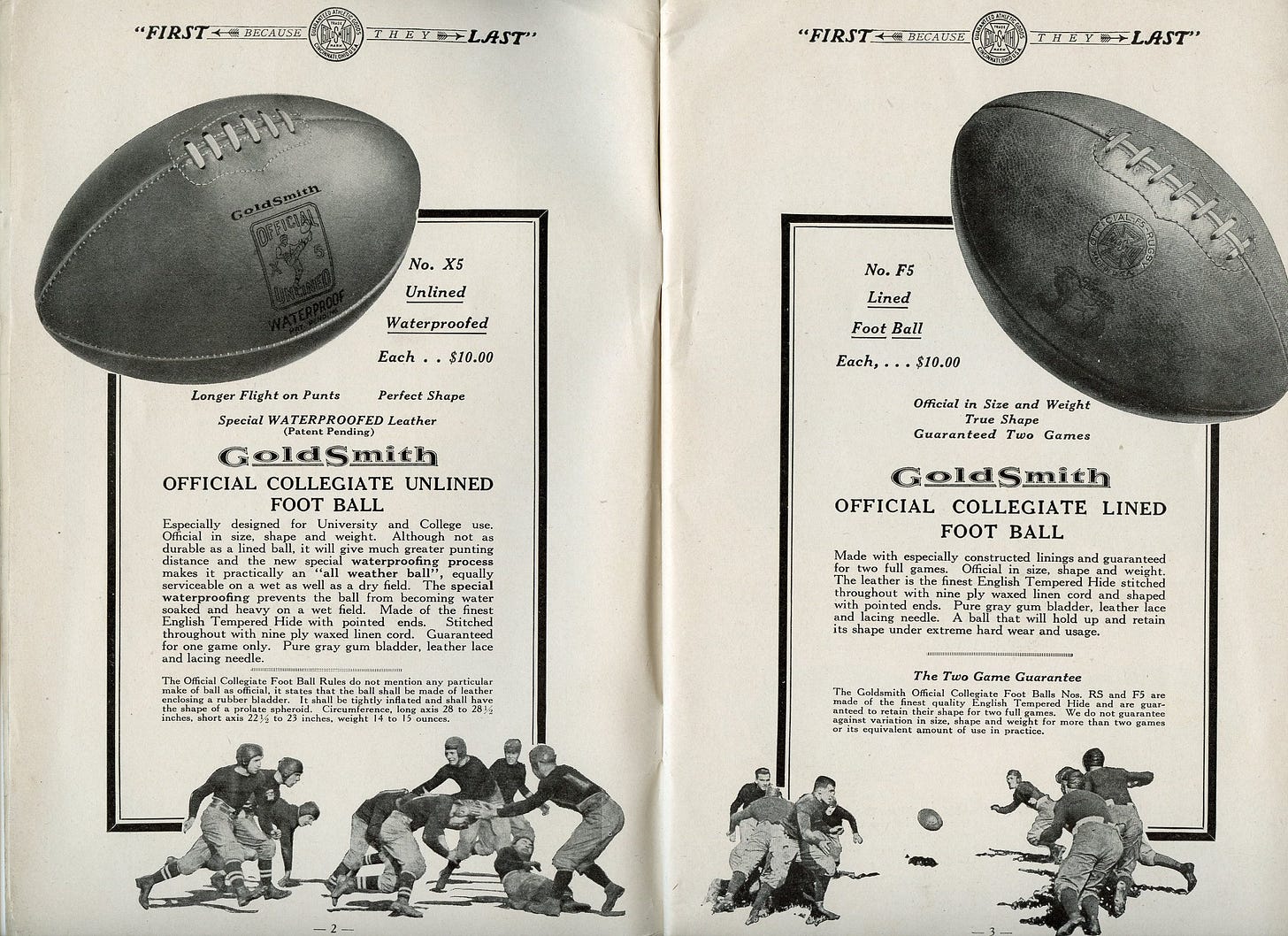Today's Tidbit... Bootleg Footballs and Changing Specifications
We are all familiar with "bootlegs" in football, which entered the game with Pop Warner's 1927 Stanford team when they ran what appeared to be a Statue of Liberty play to the left. Instead, the double-wing fullback faked the give, concealed the ball on his hip, and ran around the right end for a touchdown.
In 1929, 'bootleg' came to be applied to footballs manufactured at variance from the NCAA's specifications during a time when several aspects of the ball changed. The 1925-1926 GoldSmith catalog describes the NCAA specifications its footballs met. (See the text immediately above the players on page 2.) While GoldSmith guaranteed the unlined football for one game and the lined ball for two, both came with leather laces and a lacing needle because footballs did not yet have internal valves. Inflating a ball required the removal of its laces, the inflation of its bladder, and the relacing of the ball. Since the lacing and relacing process required flexible, thin laces, the laces rose only slightly over the ball's surface, providing passers with less grip than later footballs. The ball also has a more rounded tip than those appearing a few years later. (Click to enlarge images)
The mid-1920s saw the introduction of the internal valve, allowing the ball's inflation with a needle. Since balls no longer needed unlacing and relacing, the laces became stiffer and more prominent to enhance the quarterback's ability to throw the ball. The "Slim Jim" ball shown below has nine laces rather than the six or seven previously, has a reduced circumference, and pointier ends, all of which assist in passing the ball. Although the slimmer ball was technically illegal, teams that passed the ball and no longer dropkicked often used bootleg balls like this in games.
The internal valve also allowed manufacturers to double-lace the ball. The double-laced ball had two laces running longitudinally and under the eight or nine latitudinal laces, raising the laces further from the ball's surface. Combined with stiffer lacing, the ball became even easier to throw.
Of course, some teams using regulation balls and others using bootlegs led to inconsistencies and complaints. Running teams had little interest in the easier-to-throw ball, especially when playing a team that passed as often as ten or twelve times per game. The conflict came to a head when the 1934 rules committee required the ball to be three-quarters to one inch slimmer in the middle than in the past.
The change made passing easier still, particularly for those with smaller hands, changed how passers gripped the ball, and, according to some, shortened the length of punts until players modified their technique and struck the ball differently. Unfortunately, the slimmer, pointier ball negatively affected the drop kick and further encouraged its demise.

The shape and size of the football have not changed since 1934, though the surface pebbling, the stiffness of the laces, and the striping have changed, leaving only the ball's inflation to be manipulated by the game's scoundrels.
Football Archaeology is reader-supported. Click here to buy one of my books or otherwise support the site.




